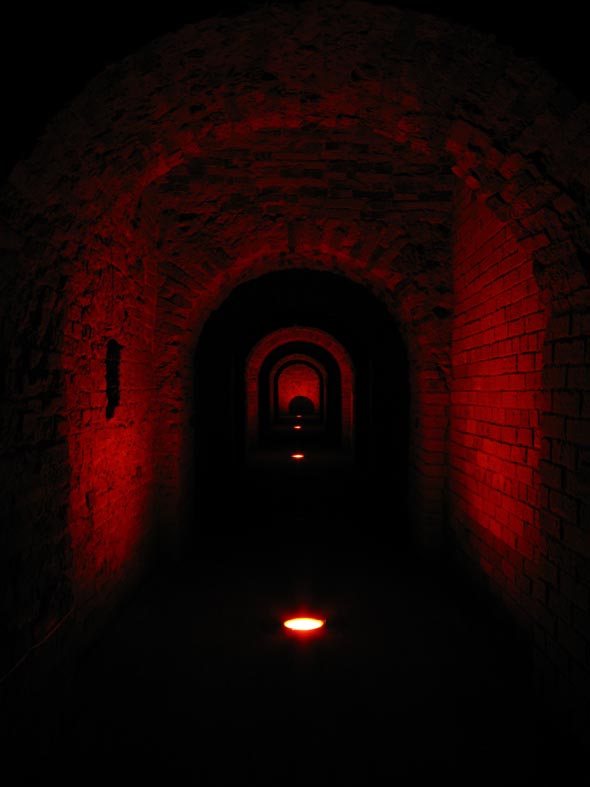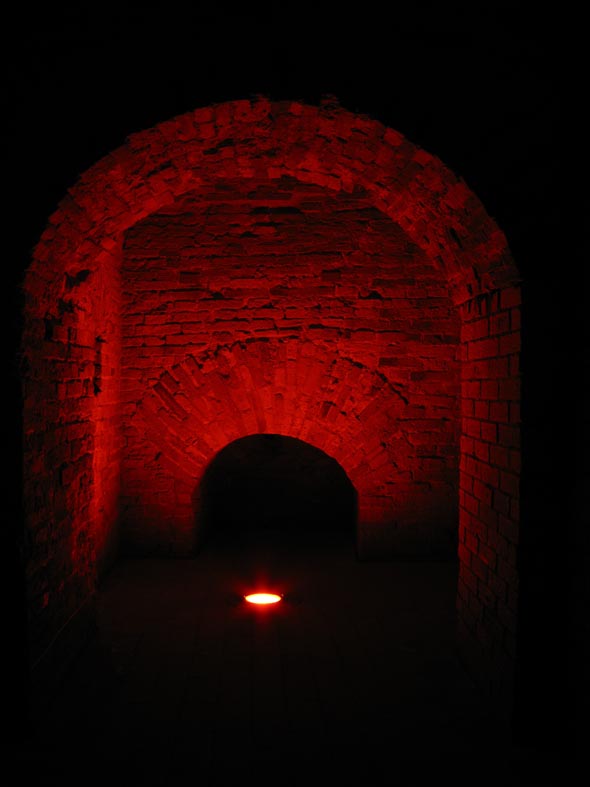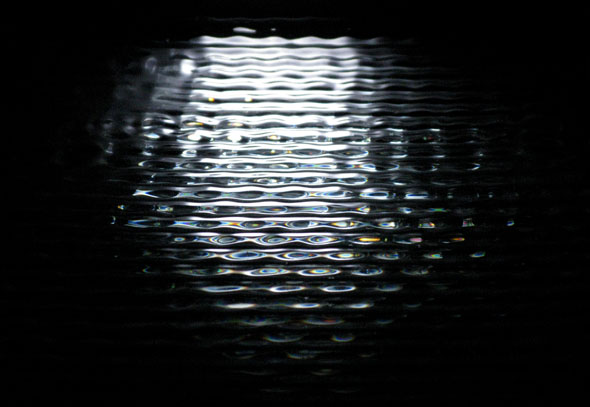POLYTHERA is a water, sound & light installation inspired by the slow-motion metamorphosing liquid that covers the surface of the planet 'Solaris', in Stanislaw Lem's book and Andrei Tarkovsky's film adaptation of it
This gigantic plasmic ocean, typified in Lem’s “Solarist studies” as POLYTHERA, is the planet’s only inhabitant: It appears to be alive, and endowed with a unique and powerful form of intelligence. In order to communicate with the mysterious sea-brain, humans beam brain-wave patterns at its gel-like surface or attack it with rays of heavy radiation. In response, the ocean begins to reflect human sub-consciousness itself, by materializing intimate fears and illusions, by stirring up haunting memories, and by creating physical replicas of deceased people
"The water became still and the surface looked transparent. A sort of mucus started to congeal under it. When it rose up, it glistened like glass. Then it began to boil. The substance solidified into big lumps and shaped all sorts of figures." (Astronaut Berton in Tarkovky's “Solaris”, 1972)
“Its undulating surface was capable of generating extremely diverse formations which resembled nothing ever seen on Earth, and the function of these sudden eruptions of plasmic ‘creativity’, whether adaptive, explorative or what, remained an enigma.” (Solarist scientist Kelvin in Lem’s “Solaris”, 1961)
POLYTHERA consists of a basin filled with water which is caused to vibrate by a sound at the frequency of 34 Hz. Stroboscopic light beams on the water surface at a steady strobe, tuned to the frequency of the tone which sets the water into vibration. The fast interference between the vibrating water and the strobe light generates an illusion to the eye: The water looks like a liquid mass moving in slow-motion
The 34 Hz frequency that generate the movements in the water were extracted from a drone that appears in the score of Tarkovsky's film adaptation
Polythera was commissioned by and presented at the H2O exhibition in St. Peterburg, Russia




